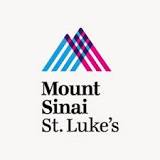Continuous Interscalene Block Results in Superior Recovery Throughout the First Postoperative Week
| Status: | Completed |
|---|---|
| Conditions: | Post-Surgical Pain |
| Therapuetic Areas: | Musculoskeletal |
| Healthy: | No |
| Age Range: | 18 - 75 |
| Updated: | 5/5/2014 |
| Start Date: | August 2011 |
| End Date: | June 2013 |
| Contact: | Admir Hadzic, MD,PhD,Prof |
| Email: | admir@nysora.com |
| Phone: | 212-665-1400 |
Continuous Interscalene Block Results in Superior Analgesia Recovery Compared to General Anesthesia or Single Injection Block Through the First Postoperative Week in Patients Having Outpatient Rotator Cuff Repair Surgery
The investigators undertook this prospective, randomized trial to compare the recovery
profile throughout the first postoperative week in patients receiving continuous (CISB)
interscalene brachial plexus block, single injection (SISB), or general anesthesia (GA) for
arthroscopic rotator cuff repair surgery. Specifically, the effects of the three anesthetic
techniques when used intraoperatively as a sole anesthesia modality were studied on
postoperative pain, time-to-first pain, analgesic consumption, fast-tracked PACU bypass
rate, length of PACU stay, time-to-discharge home, sleep duration, and related adverse
effects. The investigators hypothesized that CISB results in a superior postoperative
recovery profile as compared to SISB or GA alone.
profile throughout the first postoperative week in patients receiving continuous (CISB)
interscalene brachial plexus block, single injection (SISB), or general anesthesia (GA) for
arthroscopic rotator cuff repair surgery. Specifically, the effects of the three anesthetic
techniques when used intraoperatively as a sole anesthesia modality were studied on
postoperative pain, time-to-first pain, analgesic consumption, fast-tracked PACU bypass
rate, length of PACU stay, time-to-discharge home, sleep duration, and related adverse
effects. The investigators hypothesized that CISB results in a superior postoperative
recovery profile as compared to SISB or GA alone.
Background The advantages of single injection (SISB) and continuous interscalene brachial
plexus block (CISB) over general anesthesia (GA) only have been previously reported.
However, few studies extended their observations beyond 48 postoperative hours, and no study
has compared the effects of SISB and CISB as sole anesthesia modalities with GA only. We
undertook this randomized trial to compare the recovery profile of patients receiving SISB,
CISB or GA for arthroscopic rotator cuff repair surgery through the first postoperative
week. Our primary hypothesis was that highest NRS pain rating (worst pain score) at the end
of the study week is lower for patients in the CISB group than for patients in the SISB or
GA groups.
Methods After Institutional Review Board approval and informed consents were obtained, 71
patients of American Society of Anesthesiologists (ASA) physical status I-III, ≥18 years of
age, and BMI≤35 kg/m2, scheduled for elective outpatient arthroscopic rotator cuff repair,
were enrolled. CISB patients received 20 mL of 0.5% ropivacaine as bolus through the
catheter whereas SISB patients received the same volume of injection through a needle. CISB
patients received an infusion of 0.2% ropivacaine at 5mL/h with a patient controlled bolus
of 5 mL hourly. GA only patients received a standardized general anesthetic. All patients
were prescribed acetaminophen (500mg) with hydrocodone (7.5mg) every 4h as needed. CISB was
discontinued 48 h after surgery. Postoperative highest pain scores (NRS) through the first
postoperative week, time-to-first pain, analgesic consumption, fast-tracked postoperative
care unit (PACU) bypass rate, length of PACU stay, time-to-discharge home, sleep duration,
and related adverse effects were recorded in the PACU and at home on postoperative days 1,
2, 3, and 7.
plexus block (CISB) over general anesthesia (GA) only have been previously reported.
However, few studies extended their observations beyond 48 postoperative hours, and no study
has compared the effects of SISB and CISB as sole anesthesia modalities with GA only. We
undertook this randomized trial to compare the recovery profile of patients receiving SISB,
CISB or GA for arthroscopic rotator cuff repair surgery through the first postoperative
week. Our primary hypothesis was that highest NRS pain rating (worst pain score) at the end
of the study week is lower for patients in the CISB group than for patients in the SISB or
GA groups.
Methods After Institutional Review Board approval and informed consents were obtained, 71
patients of American Society of Anesthesiologists (ASA) physical status I-III, ≥18 years of
age, and BMI≤35 kg/m2, scheduled for elective outpatient arthroscopic rotator cuff repair,
were enrolled. CISB patients received 20 mL of 0.5% ropivacaine as bolus through the
catheter whereas SISB patients received the same volume of injection through a needle. CISB
patients received an infusion of 0.2% ropivacaine at 5mL/h with a patient controlled bolus
of 5 mL hourly. GA only patients received a standardized general anesthetic. All patients
were prescribed acetaminophen (500mg) with hydrocodone (7.5mg) every 4h as needed. CISB was
discontinued 48 h after surgery. Postoperative highest pain scores (NRS) through the first
postoperative week, time-to-first pain, analgesic consumption, fast-tracked postoperative
care unit (PACU) bypass rate, length of PACU stay, time-to-discharge home, sleep duration,
and related adverse effects were recorded in the PACU and at home on postoperative days 1,
2, 3, and 7.
Inclusion Criteria:
American Society of Anesthesiologists (ASA) physical status I-III patients
≥ 18 years of age BMI ≤ 35 kg/m2 Scheduled for elective arthroscopic shoulder surgery
Exclusion Criteria:
Patients who were undertaken open shoulder procedures Patients with difficulty
understanding the instructions for using the anesthetic infusion pump and/or pain scales
Patients with contraindications to regional anesthesia (e.g., allergy to a local
anesthetic (LA), local infection, coagulopathy) Patients with significant neurologic
disorders of the upper extremity, psychiatric or cognitive disorders, history of substance
abuse or chronic opioid use
We found this trial at
1
site
St Luke's - Roosevelt Hospital Center With 523 beds, Mount Sinai St. Luke's serves as...
Click here to add this to my saved trials
